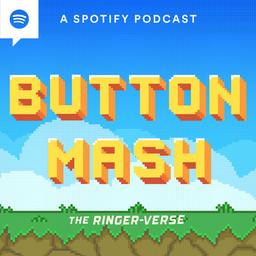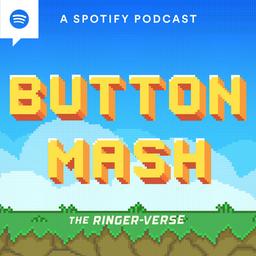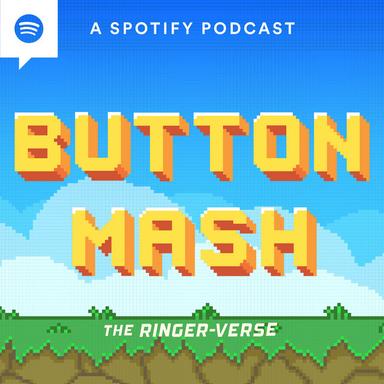It’s been a typically tumultuous year in gaming, marked by a new console launch, layoffs and studio closures, and surprise Steam sensations. And there’s much more activity to come. Despite the delay of Grand Theft Auto VI, the rest of 2025 is packed with potential year-end top-10 contenders, including Ghost of Yōtei, Metroid Prime 4, and even Hollow Knight: Silksong (supposedly). But even if the year were already over, its highlights would hold their own against those of many prior years, thanks to the entries on the top-10 list below: The Ringer’s best video games of 2025 so far.
10. The Roottrees Are Dead
Several members of the famed Roottree family have just perished in a tragic accident, and you’ve been hired by a shadowy figure to investigate the family’s history and uncover a secret that’s been hidden for generations. The year is 1998, and your research tool is a PC with a dial-up modem and a web browser. Search names, rifle through public records, download family photos, and slowly fill out the family (Root)tree, branch by branch. The Roottrees Are Dead is an excellent mystery game with gameplay mechanics that are second nature to anyone who’s ever opened an email or a search engine. There’s also an excellent postgame section that offers even more to do once you’ve cracked the case. If you’ve ever gotten hyped by the research montage in a movie, this is a must-play. —Matt James
9. The Alters
The Alters is not a breezy affair. It’s one of those space games that constantly reminds you that space does not care about you or your need to breathe, eat, or stay safe from radiation. We humans just aren’t made for the cold, uncaring vastness of vacuum. Nor are we built for the equally insurmountable task of maintaining interpersonal relationships—or so it seems sometimes.
In The Alters, you play as Jan Dolski, who wakes up on an uninhabited planet to find that the entire crew of his research mission has been killed in an accident. It turns out you need more than one guy to run a space station, so Jan is instructed to clone himself to fill out his crew, using some on-board experimental tech. Each clone, or alter, is implanted with memories from Jan’s past—slightly altered. What if Jan had decided, at a pivotal moment in his life, to abandon his relationship with his wife and plunge headfirst into work? Well, that would have resulted in a Jan with a more scientific background. What if Jan hadn’t been too proud to take the job his deadbeat father offered to get him? He would have lived a hard life as a miner. These alters all have different specializations to help you with your mission, but they also have different personalities that are often at odds with one another. Keeping the peace among the alters while trying to build up your mobile base is challenging. While you’re worrying about running out of radiation filters, a mutiny could occur because you ignored a growing clone conflict. And if you get too invested in keeping everyone happy, you might realize you haven’t mined enough materials to get your base out of the path of the scorching sun before it crests over the horizon.
The Alters can be challenging and, at times, overwhelming, but it’s an unforgettable experience with a heroic voice-acting effort (so many Jans!) and a lot to say about trauma, choice, and identity. —James
8. Doom: The Dark Ages
As foundational as Doom is to the first-person shooter genre, The Dark Ages is only the eighth mainline installment in the series, and the third in the past 20 years. Thus, although Doom dates back decades, there’s still room for each new entry to carve out a new niche and redefine the Doom experience. In many minds, Doom will always be about blasting pixelated demons with shotguns while collecting keycards that open rudimentary 3D doors. Admittedly, Doom does still feature shotguns, demons, and keycards. But each entry in the trilogy that began with the 2016 reboot has followed a distinct approach that’s true to the franchise’s legacy without completely being beholden to it.
The Dark Ages aims for a more cinematic, narratively complex presentation, which is mostly a misfire. (The world didn’t really need a Doom Slayer origin story.) Its vehicle stages are a mixed bag at best, and its multiplayer modes are missing. But the running and gunning still rules—and, crucially, rules differently than it did in previous Dooms, thanks to the new Shield Saw’s throwing, parrying, and blocking abilities, which open up new ways to play (and slay). Id Software still excels at Doom’s core competency: adrenaline generation. But it’s laudable—even downright inspiring—that the series doesn’t deliver identical fragfests every time out. —Ben Lindbergh
7. Mario Kart World
Several valid criticisms can be made about Mario Kart World. The “world” in free-roam mode is rather sparse. The interconnected nature of the courses sometimes makes the main event feel less like a race than a commute. The 24-player races can be absolute clusterfucks in which you’re ceaselessly bombarded by other players. It costs $80, and plays a lot like a game you probably already own: Mario Kart 8 Deluxe.
Those things are all true, but the bottom line is that Mario Kart, in every incarnation since its inception on the Super Nintendo, has always been fun. And there are enough new gameplay mechanics, characters, and courses for anyone to have a thoroughly enjoyable, fresh experience with the latest installment in the series. Whether it’s worth $80—or $500, packed in with a Switch 2—is certainly up for debate. But playing as a cow on the gorgeously rendered, revamped Rainbow Road and dodging a blue shell while top-notch Mario music swelled—for a few blissful moments, that was enough to make me forget about the $500 I just gave to Nintendo. Although shortly after that, I began to recall that $500 quite frequently, until Donkey Kong Bananza (see below) was released. —James
6. Kingdom Come: Deliverance II
Kingdom Come: Deliverance II is a massive, open-world game that you can pour over 100 hours into, but it doesn’t start firing on all cylinders until around 20 hours in. I admit, this description sounds awful. After years of burnout inflicted by Assassin’s Creed, Horizon, and countless other games, I don’t particularly enjoy playing endless open-world games anymore, let alone those that take 20 hours to get going. But Kingdom Come’s sequel is a special game, with well-written and well-acted characters, memorable quests, and a world that’s constantly shaped by the player’s choices. I was floored when I learned that my friend had taken a different course of action than me in a particular quest, and his choices led to an entire town being destroyed along with its residents.
The star of KCD2 is the immersion. All of the game’s elements come together to make the kingdom of Bohemia feel truly alive. It has the horse-mounted horizon-gazing of Red Dead Redemption, the unforgettable and unpredictable sidequests of The Witcher, and the nuanced performances of God of War. It’s entirely worth the uphill slog of its first 20 hours—and in five years, the other 80 hours I’ve put into the game are the ones I’ll remember. —James
5. Split Fiction
Split Fiction is already being made into a movie starring Sydney Sweeney, with a heavy-hitting director and writing team attached. But no adaptation could capture the game’s greatest strength: cooperative play. Split Fiction is the latest and, arguably, greatest of the co-op opuses by Hazelight Studios and its talkative founder and director, Josef Fares. Like its predecessor, It Takes Two, the game can be played by two people with one copy between them, either locally or online. Hazelight has almost cornered the market on this form of multiplayer, and its craft is fully refined.
As a mashup of sci-fi and fantasy, Split Fiction is given to tropey depictions of each, and its earnest, stilted dialogue and cookie-cutter villain make some of the cutscenes a slog. But the gameplay is polished, inventive, and challenging without being frustrating, and the game never settles into a rut. Driven by Fares’s restless creativity, Split Fiction finishes strong, and its unhinged side stories, two-player set pieces, and bonkers final level will be some of my stickiest gaming memories from this year. —Lindbergh
4. Donkey Kong Bananza
The Switch 2 debuted to record sales, but also a certain lack of excitement, stemming partly from the system’s similarity to its predecessor, and partly from a dearth of exclusive software, especially first-party software, aside from Mario Kart World. But as the launch buzz began to fade and new owners started to wonder what to play next with their pricey piece of hardware, Bananza delivered a second system seller, just in time to crack our list.
Nintendo hasn’t published many 3D platformers that don’t revolve around Mario, and when it has—with Wario World, Kirby and the Forgotten Land, and Donkey Kong 64, for instance—it’s typically contracted a non-Nintendo company to do the development. Not this time. For DK’s first original adventure in more than a decade, Nintendo tapped the same internal team that made a masterpiece in Super Mario Odyssey, and that pedigree paid off in one of the finest platformers since Odyssey itself. Destructible environments—a bold new frontier for gaming in the 2000s that fell out of favor for years—have made a major comeback, and Bananza harnesses the Switch successor’s extra oomph to give DK the power to lay waste to levels. Naturally, Nintendo makes the most of that core mechanic’s potential for puzzles and platforming fun. Bananza should sate Switch 2 players’ appetites until Metroid Prime 4 and Pokémon Legends: Z-A arrive—and it will, at least temporarily, quiet the calls for a new 3D Mario, while raising the bar for that sequel to clear. Ohhh, banana! —Lindbergh
3. Death Stranding 2: On the Beach
The original Death Stranding was an acquired taste. A walking simulator that took its simulation so seriously that staying upright was a chore, Death Stranding punished its players with gameplay while pummeling them with worldbuilding that was batshit even by the standards of a Hideo Kojima joint. Although the game found a fan base, many aspiring players bounced off its arduous early hours. The sequel is far more forgiving, more immediately engaging, and a little less opaque—but no less idiosyncratic, mechanically complex, or richly rewarding.
Quality-of-life improvements abound, including streamlined menus, a modular, mission-specific upgrade system that stands in for a standard skill tree, and a wide array of weapons that makes for surprisingly satisfying combat and boss fights. But navigation, exploration, and civilization are On the Beach’s bread-and-butter, and gradually gaining mastery over the game’s harsh environments is the goal of an intoxicating gameplay loop. Few gaming experiences can compare to a solitary sojourn through Death Stranding 2’s nearly photorealistic landscapes, with Sam’s stalwart plodding sometimes set to the tune of Woodkid’s ethereal soundtrack. And though the story is sometimes nonsensical—we’re talking Kojima, after all—its meditations on loneliness land with the full force of a giant BT. —Lindbergh
2. Blue Prince
In several rooms within Blue Prince’s mansion, you can encounter the shape of a seemingly endless spiral—a perfect visual representation of what it feels like to chase the deepest mysteries of the game. Although many people have played Blue Prince for more than 100 hours without uncovering every secret, a player will typically roll credits in around 20 to 30 hours. The only explicit objective is to find the 46th room within your recently deceased great-uncle’s mansion. The mansion, however, changes its layout every in-game day. From each room, the player opens a door and chooses from three different rooms to “draft.” Some doors require keys, gems, or a keycard. Each day, a certain number of steps is allotted to exploring the mansion. Fail to reach the 46th room in that number of steps, and you’ll return the next day to try again, perhaps with a bit more knowledge, gems, or money than you had before. Most people will need a few dozen days to enter room 46, though it’s possible to do so on Day 1. (No wonder the speedrunning community loves this game.)
Whether you put Blue Prince down after reaching the 46th room or you spend countless hours after that diving into lore and mysteries, it’s an unforgettable experience that channels puzzle classics such as Myst and The Witness while blazing its own unique trail. —James
1. Clair Obscur: Expedition 33
A throwback in the best possible way, Clair Obscur captures the spirit of an earlier generation of seminal role-playing games and updates its ethos for 2025. An RPG overworld; turn-based battles (albeit with a prominent parrying component); self-contained, fairly linear levels; a fictionalized France: These aren’t typical building blocks of modern blockbuster games. But Clair Obscur makes outmoded old standbys feel fresh through its compelling premise, dreamy, singular setting, and Triple-A production values, all of which elevated a production that could have been ticketed for obscurity into a tremendous critical and popular success.
Every aspect of the Clair Obscur experience smacks of inspiration, care, and quality execution: its evocative art direction; its extraordinary soundtrack; its riveting voice acting. Bold twists and endearing, indelible characters combine to buttress a movie-quality tale that doesn’t linger too long. And as a debut title made on a modest budget by an independent team, the game gave hope to an industry plagued by ever-increasing costs, extended developmental timelines, and tiresome trend-chasing. Clair Obscur isn’t just a great game. It’s a game that makes you feel great about gaming. —Lindbergh
Honorable Mentions: Assassin’s Creed Shadows, Atomfall, Avowed, Despelote, Dynasty Warriors: Origins, Elden Ring Nightreign, Ender Magnolia: Bloom in the Mist, Keep Driving, Like a Dragon: Pirate Yakuza in Hawaii, Monster Hunter Wilds, South of Midnight, Two Point Museum





